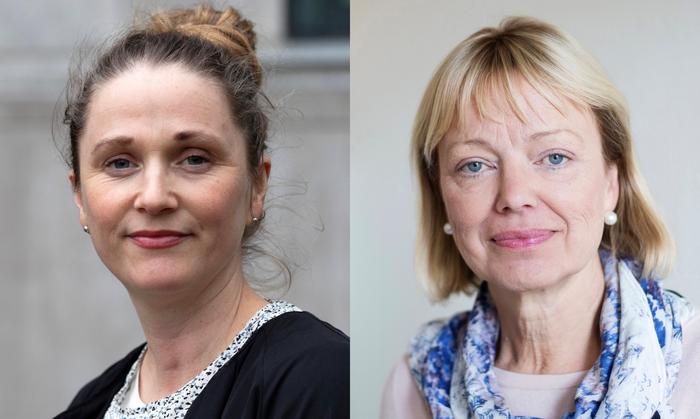In recent years, the landscape of autism diagnosis and intervention has undergone a significant transformation, particularly in regions where healthcare disparities are notable. A collaborative study conducted by researchers at the University of Gothenburg highlights the importance of integrating child health services with specialist care to expedite the diagnosis and support for young children exhibiting signs of autism. This innovative approach has resulted in a substantial decrease in the average age of diagnosis, underscoring the potential for systemic change in healthcare delivery for neurodevelopmental disorders.
Traditionally, families faced lengthy delays in obtaining assessments and interventions for young children showing early symptoms of autism or related neurodevelopmental disorders. These symptoms often manifest as challenges with social communication or repetitive behaviors, which are critical indicators for early diagnosis. The disruption of timely support can lead to prolonged periods of uncertainty and stress for families, which might exacerbate the child’s developmental challenges. The recent findings from Gothenburg suggest a way forward that mitigates these longstanding issues.
The initiative tested in Angered, a district in northeast Gothenburg known for its diverse demographic, involved a comprehensive strategy that connected healthcare providers, including pediatric specialists, child health nurses, and municipal resources such as preschools. The cornerstone of this initiative was the training of pediatric nurses to recognize the earliest signs of autism. This proactive approach was designed to facilitate immediate support for families and timely referrals to specialist assessments.
Implementing this model has shown promising results, with data indicating a reduction in the average age at which children are diagnosed with autism. Before the initiative, children were diagnosed at an average age of three years and eight months; this has now improved to two years and seven months. The earlier children are identified and subsequently supported, the better their developmental trajectory and overall outcomes are likely to be. The critical factor, as several researchers point out, is that early intervention can significantly alter the quality of life for both the children affected and their families.
Emilia Carlsson, a senior lecturer in speech and language pathology and researcher at the Gillberg Neuropsychiatry Centre, emphasizes the importance of early identification. She notes that the initiative’s success lies in the structured responses that enable families to access help without enduring lengthy wait times typically associated with obtaining assessments. This immediate support is invaluable, as research has shown that families with early interventions report better adjustment and satisfaction with their healthcare experiences.
The project’s impact is particularly noteworthy in Angered, where healthcare outreach has historically faced challenges due to cultural and linguistic barriers. Engaging with families from immigrant backgrounds requires a nuanced understanding and tailored support systems that are not only effective but also respectful of diverse cultures. By fostering collaboration across various sectors, including healthcare and education, the initiative demonstrates how a community-focused approach can enhance service delivery in a meaningful way.
Training healthcare staff to recognize autism-related signs is not merely administrative; it requires a commitment to continuous education and awareness. The study highlights that effective collaboration among healthcare professionals enhances their capacity to provide timely support. For families navigating the complexities of autism, having knowledgeable practitioners who can offer immediate assistance is a game changer. As Gudrun Nygren, a pediatrician and psychiatrist involved in the study, asserts, improved education and cooperative efforts can significantly alter the immediate experiences of families seeking assistance.
The implications of this study are wide-reaching, suggesting that the model developed in Gothenburg could be adapted and implemented in other regions facing similar challenges. However, successful replication requires not only training for healthcare staff but also an allocation of necessary resources. This funding is crucial to ensure that the support systems are robust enough to sustain the demand when autism is suspected.
Healthcare systems globally can learn valuable lessons from this project that weave together service delivery and community engagement. The focus on rapid intervention upon suspicion of autism stands in stark contrast to traditional systems that operate reactively. The shift towards proactive healthcare delivery models can lead to more equitable outcomes for families contending with complex health issues, bridging significant gaps within the healthcare continuum.
The study represents a forward-thinking approach to addressing one of the pressing challenges in pediatric healthcare today. As more regions consider integrating child health services with specialized care, the groundwork laid in Gothenburg may serve as a blueprint for creating pathways to improved health outcomes for vulnerable populations. Future research will help to refine this model further, explore its scalability, and adapt its principles to diverse healthcare contexts.
As the conversation around autism and healthcare evolves, it reinforces the necessity of collaboration, education, and innovation in medical practices. The findings from this initiative are not only a testament to the power of community-focused models but also a call to action for healthcare systems worldwide to rethink traditional paradigms in favor of more inclusive and timely interventions for children with neurodevelopmental disorders.
By positioning child health services as a first line of defense in the identification process, we can reshape the narrative surrounding autism and its treatment. Rather than waiting for symptoms to escalate or for assessments to be drawn out over years, healthcare providers can create a proactive environment that supports families from the very onset of concerns regarding their child’s development.
As this initiative continues to evolve, its success will depend on ongoing commitment from all stakeholders involved, including policymakers, healthcare providers, educators, and community organizations. Together, they can champion a model that not only prioritizes early intervention for autism but also fosters the holistic well-being of families, ultimately contributing to creating healthier societies where every child receives the support they deserve.
Subject of Research: People
Article Title: Bridging gaps in healthcare: child health services and specialist care collaboration for young children with autism and coexisting conditions
News Publication Date: 6-Feb-2025
Web References: http://dx.doi.org/10.3389/fped.2025.1501650
References: Frontiers in Pediatrics
Image Credits: Photo: Josefin Bergenholtz
Keywords: Autism, child health services, specialist care, early intervention, healthcare collaboration, neurodevelopmental disorders, early diagnosis, autism support.




